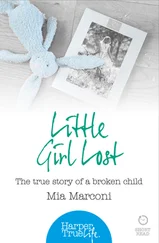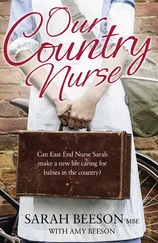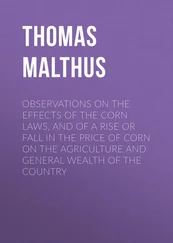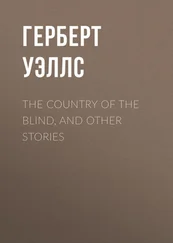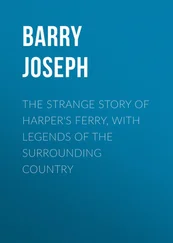“I was confused,” I said, speaking quickly so I wouldn’t lose my nerve or her attention. “I thought taking your gifts, your money, would offset some imbalance in the world. Please listen, Mrs. Mansour. Aroush is not Helen Keller, and I’m no Annie Sullivan. She won’t write books or cure cancer. But I can teach her to hold objects, to communicate without words, to recognize sounds, even shapes…”
Mrs. Mansour cut a terribly elegant figure against the Astroturf. Only her sandaled feet showed at the hem of her abaya. I noticed for the first time how exposed I was next to her black-veiled figure: my tan lines, my hips, all the places where the bathing suit dug into my bare flesh. I held Aroush close, as if to hide my flaws behind hers. My need to come clean was of no concern to Mrs. Mansour. I wondered how many teachers had been interviewed before me and passed over, when they chose to break the truth to her from the start. Someone like Mrs. Mansour must have had no problem holding out for what she wanted most.
“Thank you again for bring us to this place,” Mrs. Mansour said, with a cheery finality to her voice. “It is like Paradise.” A kind of paradise was what she paid me for, after all: the dream of Aroush’s bright future. She replaced the sunglasses atop her cheekbones, a warning I understood: that whatever I wished to illuminate, she was happy in the dark. What I had thought of as deception was my duty. If I cared to keep Aroush in my life, this was the service I had to keep providing, whether or not I’d thought better of it. And so I held my tongue and treaded water, looking up at where Mrs. Mansour’s eyes were hidden from me. From a distance perfect strangers could assume that Mrs. Mansour was my amo, and I a servant at her feet.
Legends of the White Lady
If you are beautiful and broke, one place left for you is Asia. Usually when I ran out of money I went to Tokyo — always a face cream or a push-up bra there that could use me. This time, I went to Manila. I’d been there once before, with my roommate Sabine. In cities like these there is a demand for blue eyes and light hair and skin like milk.
Manila’s airport is a bit like Tokyo’s but noisier, more crowded, its faces a few shades darker. I towered, in both cities, over almost everyone. But while Tokyo could match New York for all its rushing, solitary people, in Manila no one seemed alone but me. At ARRIVALS each brown face would find the cluster of faces it belonged to and merge into a heap of arms and laughter and chatter. Not that I had blended in much better with Sabine there. She was only half Filipina, and five-ten — almost as tall as me.
I looked for a cab and could only get a stretch limousine — the airport’s longest person hailing its longest car. On the highway, skinny boys in wifebeaters dodged the traffic, some wearing flip-flops, others barefoot, their shins and calves dark with scabs. They carried trays of gum and cigarettes. When traffic stalled us, some boys lingered at my window, which was mirrored on the outside. They cupped their hands around their faces and squinted. Their eyes roamed, blank; they couldn’t see a thing. There were older beggars too, with body parts missing: hands, a leg, an arm.
This was the city where Sabine was born; when I’d first met her, though, I couldn’t guess where she was from. It was a question she had to answer often. “My mother’s from the Philippines, my dad is American,” she would say, in a practiced manner. “And no, he wasn’t ‘in the service.’ ”
Now my driver asked me the same question. “You American, miss?” he said, as he steered through the cars and bodies.
“As apple pie,” I said. It sounded more serious than I meant it.
“I can see that, miss. Where in America? Texas?”
“New York.”
“Here on vacay?” he asked, just like an American would.
I shook my head. “Work.” Then I remembered something. “Look, I’ve been here before,” I told the driver, “and I know we don’t go through Quezon City to get to this hotel.” Five years ago, the cab ride from the airport had taken three hours and cost eight hundred pesos — about double the time and money that we should have spent, Sabine and I later found out. We looked at a map afterward. The driver had taken us along the edges of greater Manila and through Balete Drive, a long street in Quezon City that was supposedly haunted. While scamming us he told the story of a woman dressed all in white who roamed Balete after dark. She’d been run over by a car, he said, and now she crossed the street when least expected, causing accidents, wanting people to share her end. She favored taxi drivers or men who drove alone. One night after his shift, our cabbie thought he ran her over. He didn’t see her in the street until too late, and though he heard a thump and saw a body roll across the windshield, he found no woman and no blemish on his car when he stopped and got out. “But I have proof,” he said, rooting in his glove compartment for a length of white lace — allegedly torn from the lady’s dress and fished out of his fender hours after the accident.
After that, like a new celebrity or clothing brand, the ghost seemed to be everywhere for me. My first trip to Manila had been packed hour to hour with castings and photo shoots; I didn’t sightsee and met only the locals I worked with. The one thing I learned about Manila was this weird and hazy ghost story, which kept on changing shape. Every stylist, every makeup artist knew a different legend of the white lady.
“They say the Japs raped her in World War Two,” said one assistant on a swimsuit job, while she slaked my arms and legs with a light-diffusing cream. “Now she wants revenge against all men.”
“She stopped a Coca-Cola truck on Balete Drive,” said a photographer. “When the driver got out, she was gone. But the leaves of a banana stalk were waving nearby, even though the air was still that night.” This was allegory, he explained; Coca-Cola was America, somehow, and banana stalks the tropical Third World.
“She had big bones, and strong white teeth,” a hairstylist informed me. “The white lady was a white woman.”
I wondered now if the white lady was still popular here or if, like a clothing label or celebrity, her star had faded since my last visit. By the time I left the limousine, sweat had blossomed darkly under my blue cap sleeves. The humidity made a mist over everything; even the car windows were coated with little drops. My skin would probably break out in this kind of heat. The driver charged me three hundred pesos. “Fair and square,” he said. “I’ll remember you. I’ll tell everyone there was this pretty Stateside actress in my cab, who knew her way around Manila.”
I laughed, picking up my suitcase and going into the hotel. Aside from that Balete Drive business, I knew nothing about Manila. I was not an actress but a “mannequin,” as Sabine liked to refer to us. I was twenty-eight, old enough to know I would never be the Face of My Generation or the Body of My Decade, but not old enough to get it together to do anything else.
—
The hotel wasn’t five-star, but it wasn’t bad. There was something holy to it: stark and airy, like a chapel, all lace and dark wood. An effort had been made to save it from the usual peachy wallpapers or gold-framed paintings. A sheer white curtain flared above each single bed. We had stayed here last time as well. “I feel like a princess,” I remembered telling Sabine, never having had a canopy bed before. It turned out to be a mosquito net, and Sabine laughed at me. “ Some one hasn’t lived in the developing world,” she said.
Sabine was my family, which sounds tragic, but it was true. We didn’t know our fathers or speak to our mothers. When I was eighteen and had to get away from my mother, and Sabine was twenty and needed a new roommate, our booker introduced us. Had we looked alike, we might not have been friends; but she was a Winter and I was a Spring, and we were never up for the same jobs. For ten years we lived together, in a two-bedroom above a diner that sent up smells of coffee in the morning and fried potatoes in the afternoon. The only time we ever really closed our bedroom doors was when we brought boys home for the night.
Читать дальше






